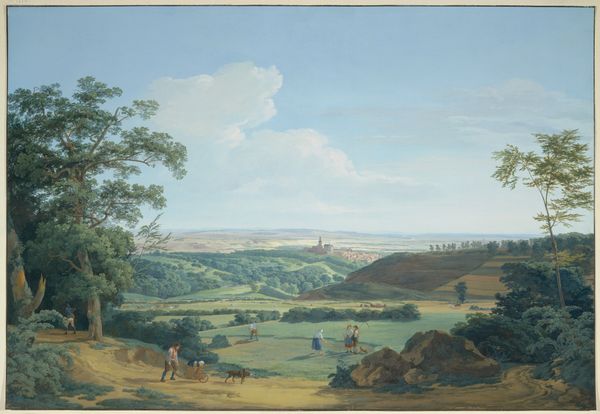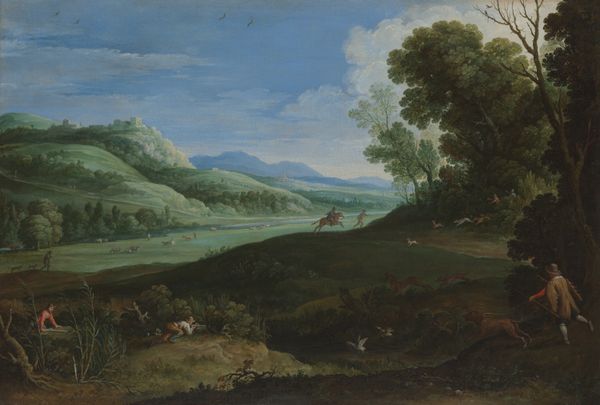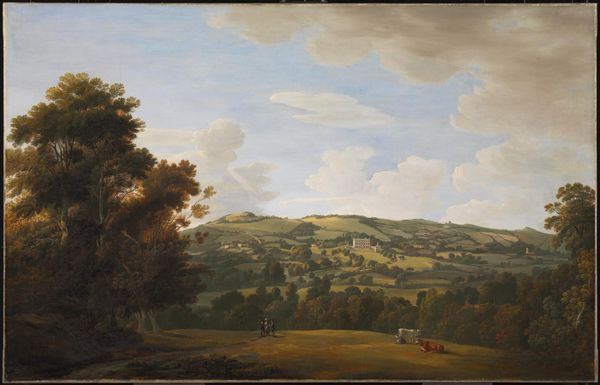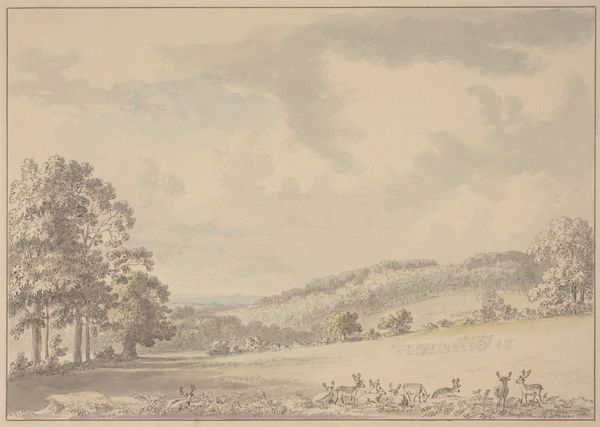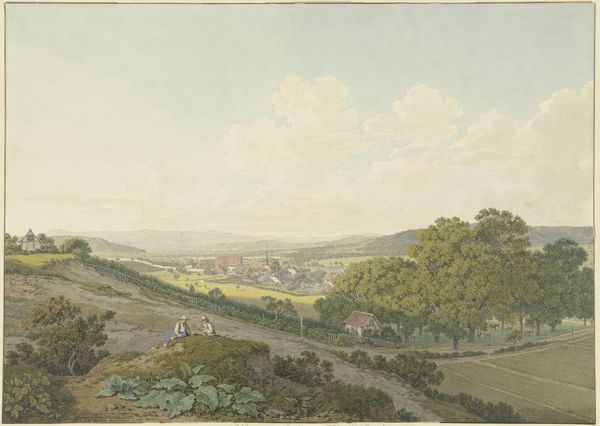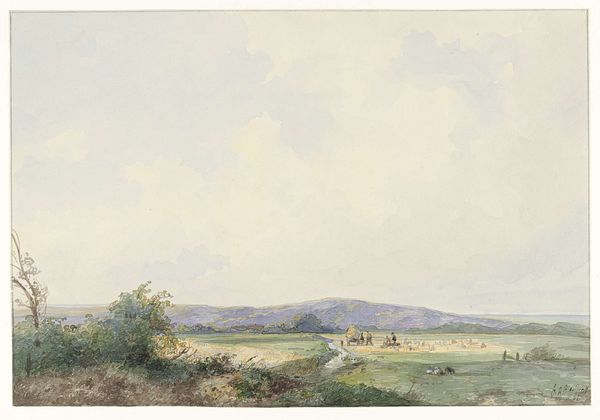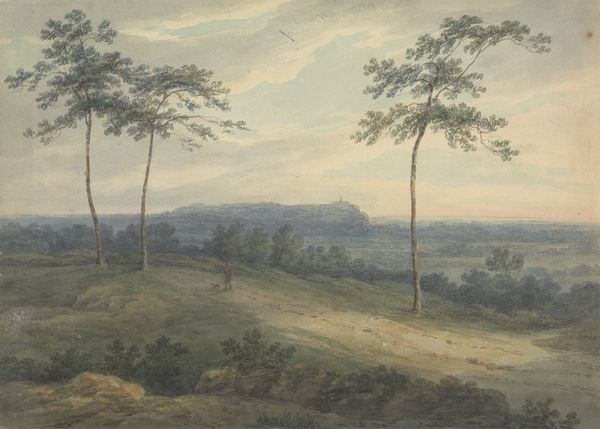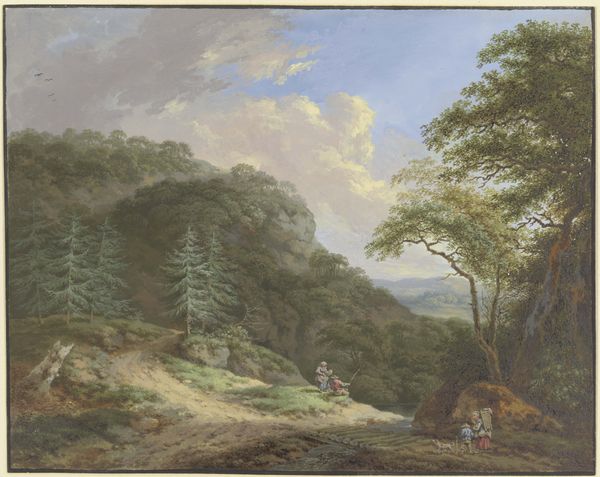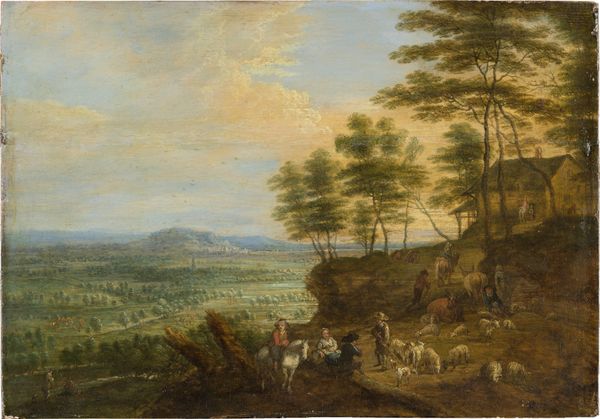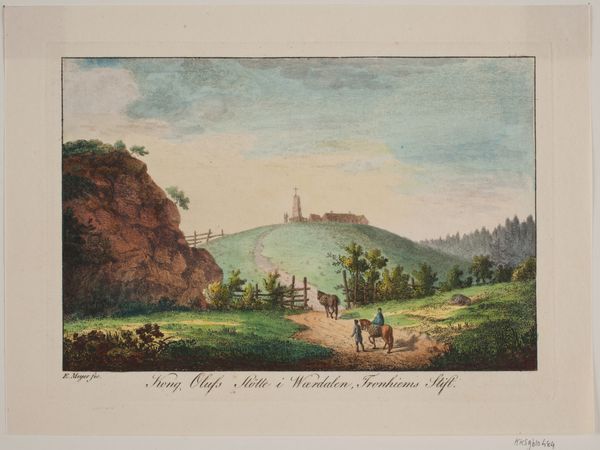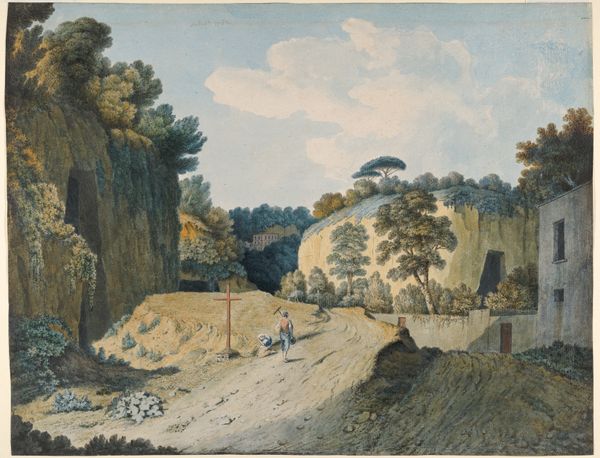
drawing, painting, gouache, watercolor
#
drawing
#
painting
#
gouache
#
landscape
#
watercolor
#
romanticism
#
realism
Copyright: Public Domain
Curator: The Städel Museum houses this lovely gouache and watercolor piece by Anton Radl. It’s called "Königstein und Falkenstein im Taunus." Editor: Immediately striking is how gentle it feels. The pale blues, yellows, greens... almost muted, yet the composition has such clarity. Curator: Radl was deeply invested in depicting the German landscape, fueled by the rise of Romanticism and a renewed interest in national identity. Think about how that idyllic portrayal shapes a viewer's understanding of the land. It’s more than just pretty scenery. Editor: Indeed. Look at the laborers depicted there, tending to the hay. Are they idealized representations of rural labor, fitting into a Romantic vision? And how accessible would a piece like this be to the people actually doing the labor? Would they even recognize their lives in it? Curator: Good point. It is definitely consumed by a very different, often wealthier, class of patron. The method, watercolor and gouache, too suggests refinement; it is portable, easily displayed and sold, far removed from monumental forms meant to impress through sheer scale. Editor: Yet even within that medium, Radl is making conscious choices. That clarity comes through meticulous technique. How does the handling of watercolor differ here from other artists of the time? Was he using mass-produced paints? What would be his particular concerns for archival, preserving such a delicate rendering? Curator: These landscape painters play an important role in shaping how the public thinks about its surrounding environs. Not only the image, but its consumption helped cement certain places in cultural memory. This helped frame the discourse surrounding national pride, travel and leisure. Editor: Which comes full circle, back to the contemporary viewer in the museum. A piece of its time, showing us so much. Curator: It does highlight the power that the medium, in this case watercolor, carries to distill not only landscape, but broader cultural aspirations of 19th century Germany.
Comments
No comments
Be the first to comment and join the conversation on the ultimate creative platform.
